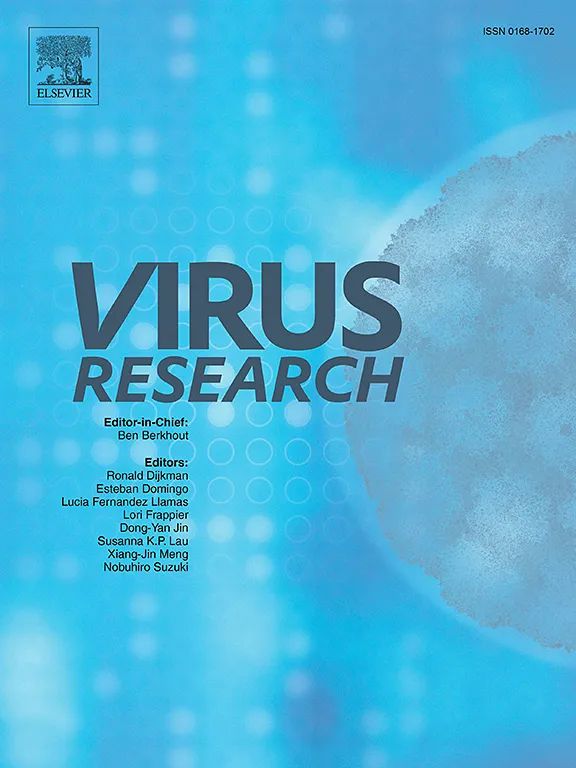A systematic review of T cell epitopes defined from the proteome of human immunodeficiency virus
IF 2.7
4区 医学
Q3 VIROLOGY
引用次数: 0
Abstract
Background
Human immunodeficiency virus (HIV) persists as a formidable and far - reaching threat without a cure. T cells are crucial for antiviral immunity and pathology in HIV patients, with specific T cell epitopes potentially key to effective therapies and HIV cure methods.
Methods
Identifying sufficient T-cell epitopes within the HIV proteome holds great significance. It can not only substantially accelerate the development of T-cell epitope-based vaccines but also enable a highly precise evaluation of the host's HIV-specific cellular immunity. This research provides an overview of functionally verified T-cell epitopes derived from HIV antigens, the human leukocyte antigen (HLA) alleles, as well as the screening and identification strategies.
Results
Totally, 239 and 82 epitopes have been verified for CD8+ T-cell and CD4+ T-cell respectively by functional experiments. The majority are presented by various HLA supertypes, such as HLA-B35, B5301, A6802 or A0201, and DRB1 molecules. Furthermore, 74 % of the epitopes for CD8+T-cell belong to Gag, Pol, as well as Nef Protein while 68 % of the CD4+ T-cell epitopes originate from Gag protein. Antigenic peptides of HIV-1 subtypes A/B/C/D/CRF01_AE account for 11.43 %, 58.26 %, 21.69 %, 4.96 %, and 3.65 %, respectively.
Conclusions
The 321 T-cell epitope repertoires of HIV encompass the HLA polymorphisms of the main populations and subtypes in a particular geographical area. These epitope catalogs provide strong support for researching therapeutic vaccines, specific T-cell detection, and the interaction mechanism between HIV and the immune system. However, the limitations of the identified T-cell epitope library, the polymorphism of HLA molecules, and the high mutation rate of HIV require more research to cover the entire HIV proteome and the comprehensive landscape of T-cell epitopes in global patients.
从人类免疫缺陷病毒蛋白质组中确定的T细胞表位的系统综述
人类免疫缺陷病毒(HIV)一直是一种无法治愈的可怕而深远的威胁。T细胞对HIV患者的抗病毒免疫和病理至关重要,特定的T细胞表位可能是有效治疗和HIV治愈方法的关键。方法在HIV蛋白组中发现足够的t细胞表位具有重要意义。它不仅可以大大加速基于t细胞表位的疫苗的开发,而且可以高度精确地评估宿主的hiv特异性细胞免疫。本研究概述了功能性验证的源自HIV抗原的t细胞表位,人类白细胞抗原(HLA)等位基因,以及筛选和鉴定策略。结果CD8+ t细胞和CD4+ t细胞经功能实验分别鉴定出239个和82个表位。大多数是各种HLA超型,如HLA- b35、B5301、A6802或A0201和DRB1分子。此外,CD8+ t细胞74%的表位属于Gag、Pol和Nef蛋白,而CD4+ t细胞68%的表位来自Gag蛋白。HIV-1 A/B/C/D/CRF01_AE亚型抗原肽分别占11.43%、58.26%、21.69%、4.96%和3.65%。结论321个HIV t细胞表位库包含了特定地理区域主要人群和亚型的HLA多态性。这些表位目录为研究治疗性疫苗、特异性t细胞检测以及HIV与免疫系统的相互作用机制提供了强有力的支持。然而,由于已鉴定的t细胞表位文库的局限性、HLA分子的多态性以及HIV的高突变率,需要更多的研究来覆盖整个HIV蛋白质组和全球患者t细胞表位的综合景观。
本文章由计算机程序翻译,如有差异,请以英文原文为准。
求助全文
约1分钟内获得全文
求助全文
来源期刊

Virus research
医学-病毒学
CiteScore
9.50
自引率
2.00%
发文量
239
审稿时长
43 days
期刊介绍:
Virus Research provides a means of fast publication for original papers on fundamental research in virology. Contributions on new developments concerning virus structure, replication, pathogenesis and evolution are encouraged. These include reports describing virus morphology, the function and antigenic analysis of virus structural components, virus genome structure and expression, analysis on virus replication processes, virus evolution in connection with antiviral interventions, effects of viruses on their host cells, particularly on the immune system, and the pathogenesis of virus infections, including oncogene activation and transduction.
 求助内容:
求助内容: 应助结果提醒方式:
应助结果提醒方式:


